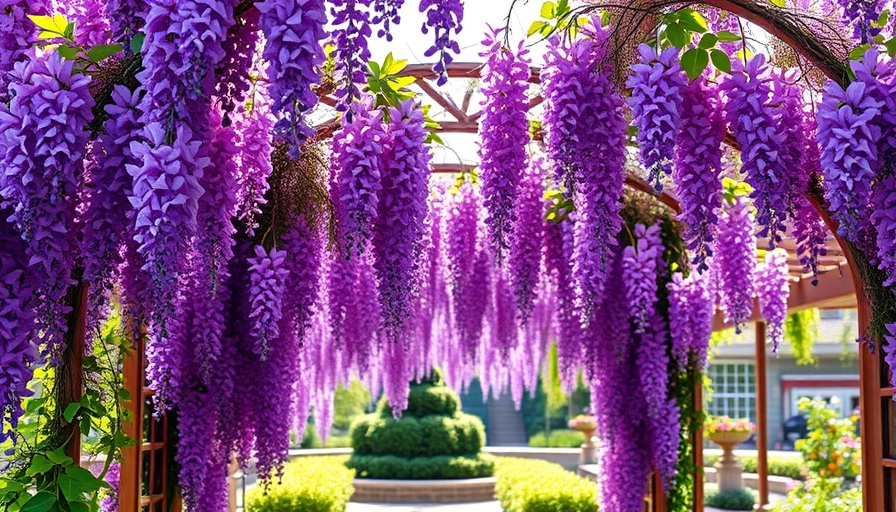
Why Train Wisteria? Understanding Its Growth
Wisteria is not just a pretty face in the garden; it's a powerful vine that requires thoughtful cultivation to thrive and stay controlled. These stunning plants, known for their cascading clusters of fragrant blossoms, can grow extraordinarily large and heavy if left unmanaged. A well-maintained wisteria not only enhances the beauty of your landscaping but also attracts pollinators and provides valuable shade when trained over structures like pergolas and arbors.
How to Start: Providing Ample Support
To keep wisteria from becoming a runaway vine, it's essential to provide sturdy support as it matures. Wisteria vines can reach lengths of up to 40 feet and weigh hundreds of pounds, making it crucial to choose the right type of support. Opt for permanent structures made of strong materials such as thick wooden or metal posts. This reliable framework is not just for aesthetics; it is essential for the safety and health of the plant. Portable or lightweight supports are inadequate and could lead to disastrous collapses.
Choosing a Central Leader: The Key to Success
The first step in training your wisteria is to identify a central leader, or the main stem, from which all other growth will stem. This process is not merely about aesthetics; a robust leader supports the entire vine and provides a structured growth pattern. Carefully select the strongest shoot from the base and remove competing branches, ensuring that all the plant's energy concentrates on developing this crucial leader. This investment in time and effort pays dividends in achieving a healthier and more beautiful plant.
Best Practices for Pruning: Maintaining Shape and Size
Regular pruning in late winter is vital for maintaining the shape and health of your wisteria. This not only encourages more blooms but also keeps the plant from taking over your garden. Trim back excessive growth, focusing on removing any dead branches and shortening the side shoots to encourage fuller cascades of flowers. Ensure the cuts are clean to promote quick healing and reduce the risk of disease.
Practical Insights: DIY Support Structures
If you're handy with tools and materials, consider building your own support structures for a custom gardening experience. For instance, creating an arched plant support project could be a unique way to display your wisteria while providing the necessary strength to hold its weight. These DIY projects not only enhance the aesthetics of your garden but also tailor the space to fit your specific needs.
The Emotional Value of Growing Wisteria
For many homeowners, planting and tending to wisteria can be an emotionally rewarding endeavor. As you watch the vine grow and flourish, it can symbolize patience and growth, mirroring the effort you put into cultivating your garden. The beauty of wisteria can create a sanctuary in your backyard – a personal space where you can unwind and reconnect with nature.
Call to Action: Let Experts Handle Your Landscape Needs
As beautiful as wisteria can be when properly maintained, the work required can be overwhelming, especially for those new to gardening. If you’re in need of expert assistance, consider contacting your local yard care professionals. For top-notch lawn care and landscape management, reach out to Norther-LawnCare.com, your five-star rated solution for property management. Call Everett Lucas at 231-450-3414 for a consultation today!
 Add Row
Add Row 
 Add
Add 


Write A Comment